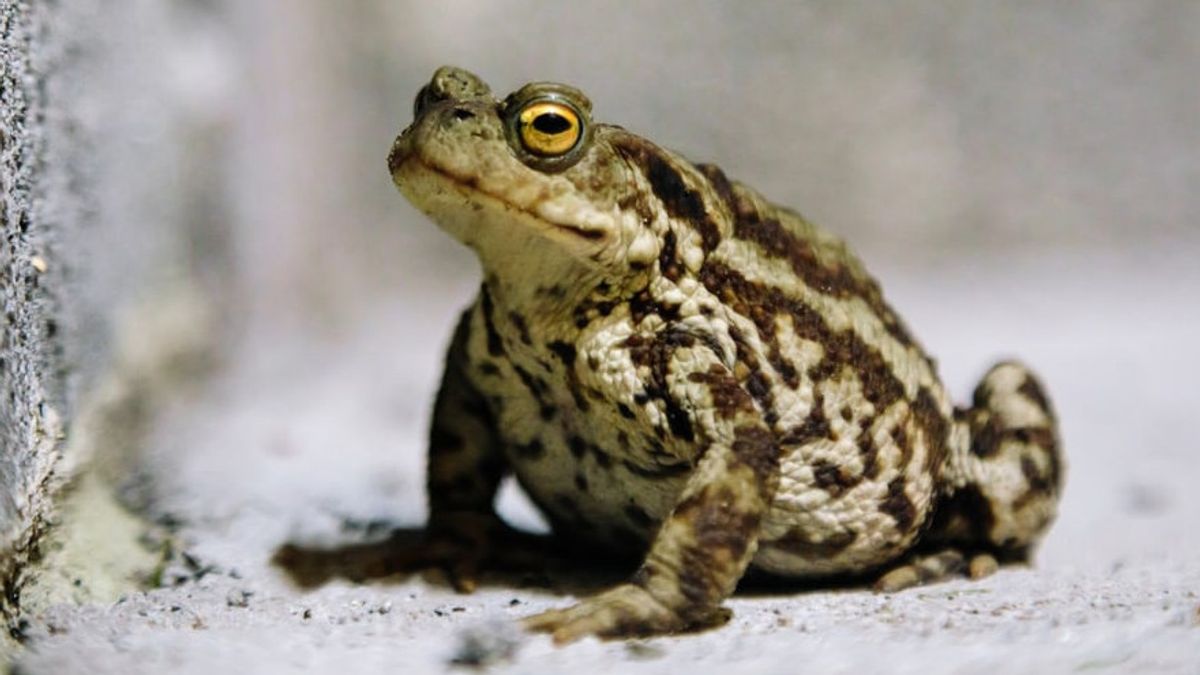JAKARTA - The United States (US) government has declared an emergency measure for the northern Nevada frog, also known as the Dixie Valley frog, as an endangered animal.
The threat of extinction is due to a geothermal power plant that is currently under construction. The US Fish and Wildlife Service has announced that it has formally proposed rules to list the Dixie Valley frog as an endangered species.
Temporary protection, which takes effect immediately and lasts for 240 days, was put in place to ward off potential extinction of the frogs. The US Fisheries and Wildlife Service will also consider public comments on whether or not to extend the frog's state of emergency.
This marks the second time in 20 years the US Fish and Wildlife Service has listed the species as emergency endangered. Under the Endangered Species Act, the government can enforce the protection of species declared endangered, among other things, by prohibiting interference with breeding activities or critical habitats.
"Protecting small population species like these ensures the sustainable biodiversity needed to maintain a climate-resilient landscape in one of the driest states in the country," the Fisheries and Wildlife Service said in a statement.
However, they did not explain how the frogs could have affected the construction of a power plant about 100 miles (160 kilometers) east of Reno.
In November, the Bureau of Soil Management approved the Dixie Meadows geothermal project, two proposed geothermal power plants for public land managed by a federal agency, with the aim of helping the state's goal of encouraging more renewable energy sources.
But a month later, conservationists at the Center for Biodiversity, an Arizona-based advocacy group, and the Fallon Paiute-Shoshone Tribe sued the bureau in an attempt to block the project.
The lawsuit alleges that the geothermal plant will drain a nearby hot spring sacred to the tribe and exterminate the Dixie Valley frog species.
The dispute is one of a growing number of conflicts over wildlife protection and tribal rights on federal lands facing US President Joe Biden's administration as it pursues its agenda to combat climate change by replacing fossil fuels with renewable energy.
It is known, geothermal energy is generated from hot water deep beneath the Earth. Dixie Valley frogs live in the wetlands around the hot springs next to the construction site.
In addition to geothermal development, other major threats to one of the smallest frogs in the western US include disease, predation by non-native frog species, pumping groundwater for human and agricultural uses, and climate change.
The last time a species was declared emergency endangered was in 2011, when the administration of former US President Barack Obama took action against the Miami blue butterfly in south Florida.
Prior to that, an emergency list was provided for the California tiger salamander under the administration of former US President George Walker Bush in 2002.
Other species listed as critically endangered over the years include the California bighorn sheep of the Sierra Nevada in 1999, the Steller sea lion in 1990, and the Sacramento River winter migration of the chinook salmon and Mojave desert tortoise, both in 1989.
The English, Chinese, Japanese, Arabic, and French versions are automatically generated by the AI. So there may still be inaccuracies in translating, please always see Indonesian as our main language. (system supported by DigitalSiber.id)













